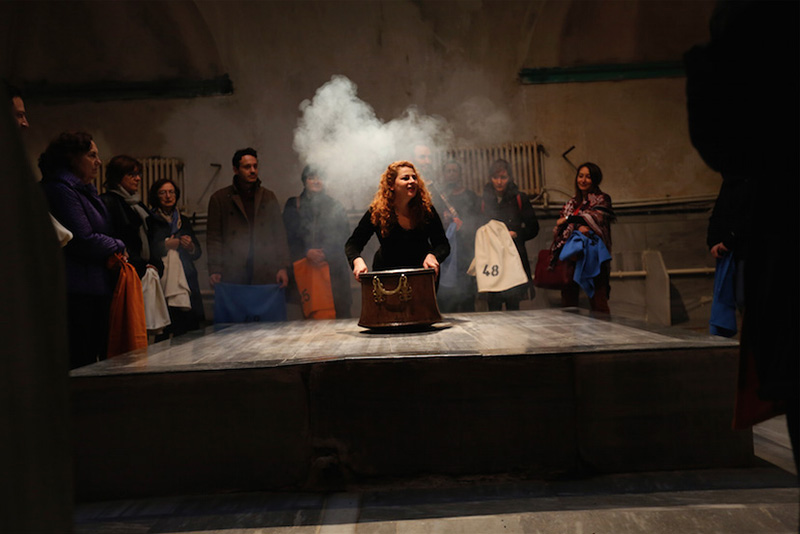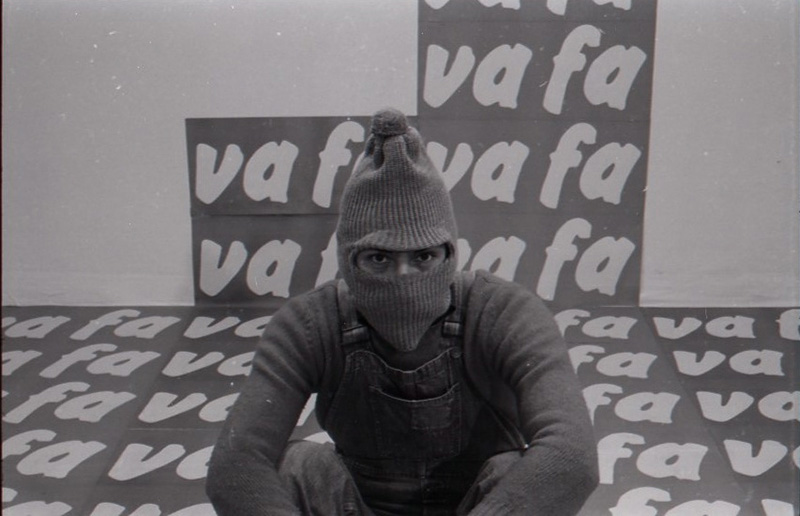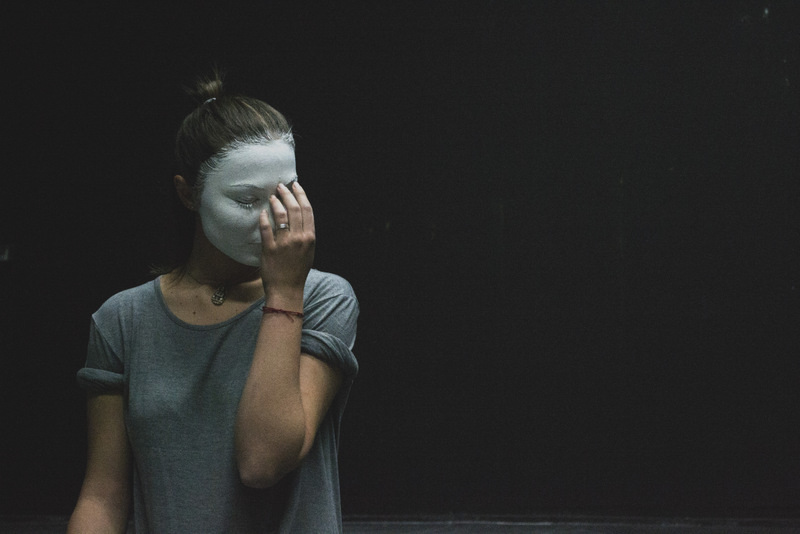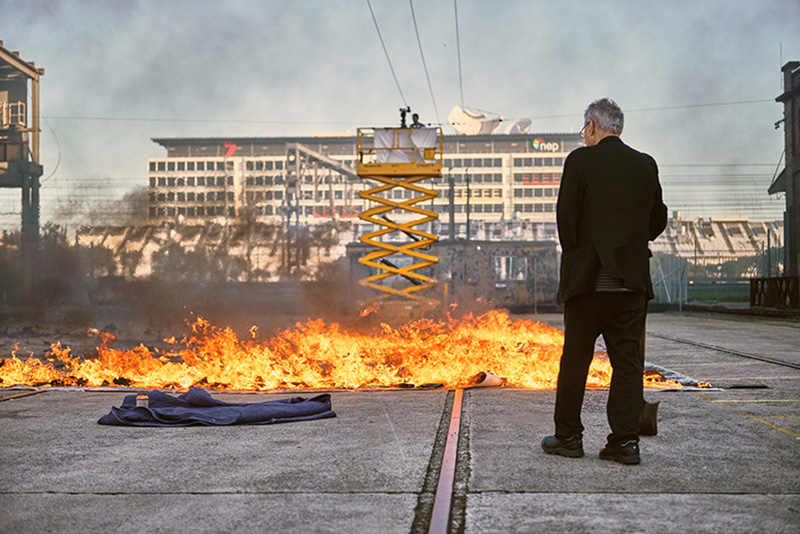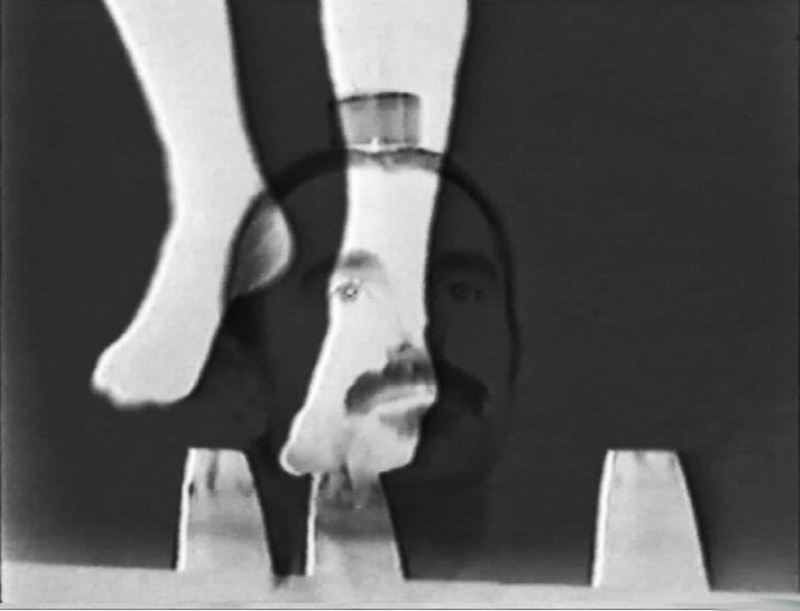ART-TRIBUTE:Venice International Performance Art Week,Part IΙI
 Venice International Performance Art Week is the independent on-going live art exhibition project. It’s purpose is to strengthen the importance of the concepts of mobility, art nomadism and temporary community, to offer moments of fruitful encounters and exchange to lay the foundations for future professional opportunities for artists and cultural operators and, finally, paying attention to the creation of a broader audience for performance art.
Venice International Performance Art Week is the independent on-going live art exhibition project. It’s purpose is to strengthen the importance of the concepts of mobility, art nomadism and temporary community, to offer moments of fruitful encounters and exchange to lay the foundations for future professional opportunities for artists and cultural operators and, finally, paying attention to the creation of a broader audience for performance art.
By Efi Michalarou
Photo: Venice International Performance Art Week Archive
The Venice International Performance Art Week has been conceived in form of a trilogy. “Hybrid Body-Poetic Body“ (2012), “Ritual Body-Political Body“ (2014) and “Fragile Body-Material Body” (2016). Each of the three editions consisted of a comprehensive exhibition showing historical performance art pioneers’ works and documentation, alongside the presentation of live art performances. The program was structured: daily morning talks by and encounters with the participating artists, associated curators and cultural operators open to public, series of long durational performances during the afternoons and shorter performance slots in the evenings. The “Art Week-Fringe” section was dedicated to upcoming and emerging artists. For the last part of trilogy “Fragile Body-Material Body” (10-17/12/16), the works presented physical, mental and spiritual bodies as primary material of artistic expression, aiming to investigate a wide range of concepts pertinent to the art forms of performance art, Live art and Body Art, such as: authenticity, living entities and their relations towards one another; fragility and vulnerability of the individual and of the social relationships; mental and spiritual states rendered through liminal physical and corporeal manifestation; as well as encouraging questions around the post-organic transformations and mutations to which we subject the human body. Marilyn Arsem presented an Opening Reading including her manifesto “THIS Is Performance Art” (2011), as well as documentation of her durational Performance “100 Ways to Consider Time” (9/11-19/2/16) at Museum of Fine Arts Boston. On Presentation were: the video performances by Marina Abramović: “Lips of Thomas” and “Nude with Skeleton”. “Lips of Thomas” (1975 – 2005) ia two-channel video installation consisting of the video documentation from Abramović’s 1975 performance at the Krinzinger Gallery and the one later performed in 2005 at the Guggenheim in New York. It refers to autobiographical aspects of her youth spent in the former Yugoslavia during the communist regime, various Christian themes and rituals of repentance. In “Nude with Skeleton” (2005), a skeleton lays supine on top of Marina Abramović, who is nude. According to the artist, the human skeleton is a metaphorical representation of “…the last mirror we will all face”, referring to death and temporality, which are recurring themes in Abramović’s work. A video documentation of Mona Hatoum’s “So Much I Want To Say” (1983), performed live for the Wiencouver IV event in Vancouver. A series of still images unfold, revealing the face of a woman in close-up. Two male hands repeatedly gag the woman and obscure parts of her face. On the soundtrack repeated over and over again are the words “so much I want to say”. John Baldessari’s videos “I Am Making Art” (1971) that shows the artist performing with deadpan precision, he moves his hands, arms and entire body in studied, minute motions, intoning the phrase “I am making art” with each gesture. Each articulation of the phrase is given a different emphasis and nuance, as if art were being created from moment to moment. And the video “I Will Not Make Any More Boring Art” (1971) that shows Baldessari, who like an errant schoolboy, dutifully writes, “I will not make any more boring art” over and over again in a notebook for the duration of the tape. In an ironic disjunction of form and content, Baldessari’s methodical, repetitive exercise deliberately contradicts the point of the lesson, to refrain from creating “boring” art. Mary Zygourisis a visual artist and performer and employs various means using performance as her fixed point of reference. Her actions, organized in detail and through in-depth research, usually unfold in public spaces thus provoking unpredictable outcomes and the viewers’ critical participation. Her multi-layered body of work addresses concepts and strategies of current site-specific performance expressing very distinct experiences of space and place adopting multiple roles. Through her work history and space turn toward individual and collective experience, claiming through active participation of communities an imaginatively and collectively resistant public space, she took part with “Bath of the Constitution” as part of the co-curated section “THE DREAM OF ANTIGONE : Performance Art In Greece Between The Seventies And Today”. In the video “Video Psychagogia (Entertainment)” (1993), Panos Charalambous interacts with the vocalizations of Demetrio Stratos. Charalambous’s work is identified with the concept of place, rather than with the concept of space, giving to time an ahistorical dimension in which present, past and eternity can interweave and melt. His site-specific interventions or the use of objects such as music LPs, reveal an ideal place, the “place” of memory, which is transformed in a concrete and living presence. In the video “Lip Sync” (1969), with the camera mounted upside down, framing only his mouth and neck, Bruce Nauman repeats the phrase “lip sync” over and over in loud whisper. Sound and image are intentionally unsynchronized, while the upside-down view of his lips and tongue in action provides a further disorienting quality to the work. The documentary film “La voce Stratos” (2009) by Luciano D’Onofrio and Monica Affatato. The film has a biographical narrative structure, immersed in the social climate and historical and social context of the ‘60s and ’70s. It highlights the figure of the music and voice researcher and performer Demetrio Stratos. Based on an archive of images including the viewpoints of artists and people who shared artistic experiences with Stratos, the film also includes the contribution of the members of the legendary vanguard music band Area. The sound-video installation and documentation “Demetrio e il Sogno di Antigone” with sound excerpts from Demetrio Stratos’ LP albums: Metrodora, Cantare La Voce and Le Milleluna. These were accompanied by images and graphic diagrams of his voice, as well as texts and video footage of Stratos interpreting Artaud, explaining his vocal techniques, and rare interview material (among others by John Cage).
Info: Curators: VestAndPage (Verena Stenke and Andrea Pagnes), Venice International Performance Art Week, Duration: 10-17/12/16, www.veniceperformanceart.org



